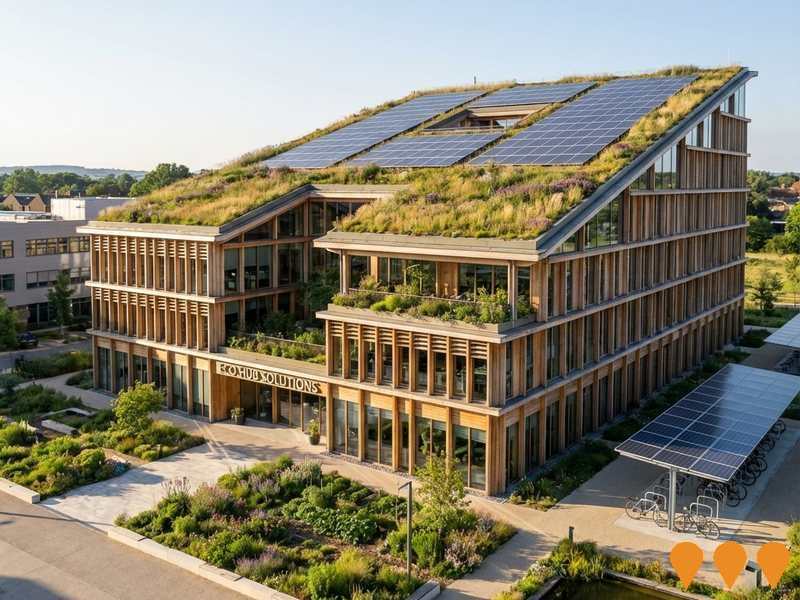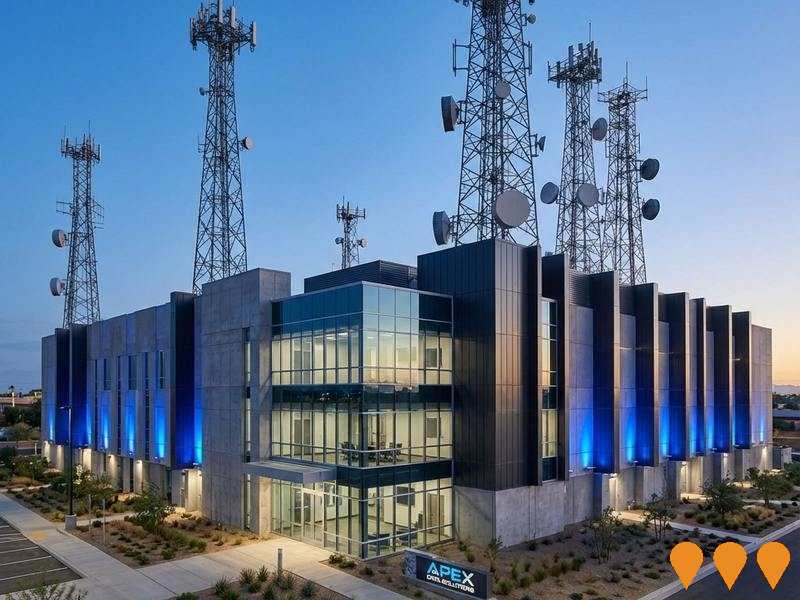Chart Color Schemes
est. as @ -- *
ABS ERP | -- people | --
2021 Census | -- people
Sales Activity
Curious about local property values? Filter the chart to assess the volume and appreciation (including resales) trends and regional comparisons, or scroll to the map below view this information at an individual property level.
Find a Recent Sale
Sales Detail
Population
An assessment of population growth drivers in Nailsworth - Broadview reveals an overall ranking slightly below national averages considering recent, and medium term trends
Nailsworth - Broadview's population is around 6,607 as of Aug 2025. This reflects an increase of 123 people since the 2021 Census, which reported a population of 6,484 people. The change is inferred from the estimated resident population of 6,580 from the ABS as of June 2024 and an additional 14 validated new addresses since the Census date. This level of population equates to a density ratio of 2,847 persons per square kilometer. Population growth was primarily driven by overseas migration that contributed approximately 72.1% of overall population gains during recent periods.
AreaSearch is adopting ABS/Geoscience Australia projections for each SA2 area, as released in 2024 with a base year of 2022. For areas not covered and years post-2032, the SA State Government's Regional/LGA projections by age category are adopted, based on 2021 data and adjusted using weighted aggregation from LGA to SA2 levels. Considering projected demographic shifts, lower quartile growth is anticipated for statistical areas analysed by AreaSearch. The area is expected to grow by 238 persons to 2041, recording a gain of 3.0% in total over the 17 years.
Frequently Asked Questions - Population
Development
Residential development activity is lower than average in Nailsworth - Broadview according to AreaSearch's national comparison of local real estate markets
Nailsworth - Broadview has granted around 14 residential property approvals annually. Over the past five financial years, from FY21 to FY25, 74 homes were approved, with a further six approved so far in FY26. On average, each dwelling has accommodated 2.3 new residents per year over these five years, indicating strong demand that supports property values.
New homes are being constructed at an average cost of $460,000, higher than regional norms, reflecting quality-focused development. This financial year has seen $3.5 million in commercial approvals, suggesting limited commercial development focus. Compared to Greater Adelaide, Nailsworth - Broadview shows significantly reduced construction activity, with 68.0% fewer new homes per person than the regional average. This scarcity typically drives demand and prices for existing properties higher. Nationally, this activity is also below average, likely due to the area's maturity and possible planning constraints.
Recent construction consists of 91.0% standalone homes and 9.0% townhouses or apartments, maintaining the area's suburban identity with a concentration of family homes suitable for buyers seeking space. Notably, developers are constructing more detached housing than the existing pattern implies (61.0% at Census), suggesting persistent strong demand for family homes despite densification trends. The location has approximately 568 people per dwelling approval, indicating an established market. Looking ahead, Nailsworth - Broadview is projected to grow by 197 residents by 2041. At current development rates, new housing supply should comfortably meet demand, providing favourable conditions for buyers and potentially supporting growth beyond current population projections.
Frequently Asked Questions - Development
Infrastructure
Nailsworth - Broadview has limited levels of nearby infrastructure activity, ranking in the 13thth percentile nationally
No infrastructure projects have been identified by AreaSearch that could impact the area. Among them are Prospect Lifestyle Precinct, Northern Adelaide Road Upgrades Program, New Women's and Children's Hospital, and Adelaide Level Crossings Congestion and Safety.
Professional plan users can use the search below to filter and access additional projects.
INFRASTRUCTURE SEARCH
 Denotes AI-based impression for illustrative purposes only, not to be taken as definitive under any circumstances. Please follow links and conduct other investigations from the project's source for actual imagery. Developers and project owners wishing us to use original imagery please Contact Us and we will do so.
Denotes AI-based impression for illustrative purposes only, not to be taken as definitive under any circumstances. Please follow links and conduct other investigations from the project's source for actual imagery. Developers and project owners wishing us to use original imagery please Contact Us and we will do so.
Frequently Asked Questions - Infrastructure
Northern Adelaide Irrigation Scheme (NAIS) - SA Water
Part of SA Water's $1.5 billion Northern Suburbs Infrastructure Program to deliver critical water and recycled water network upgrades across northern Adelaide. The Northern Adelaide Irrigation Scheme (NAIS) uses recycled water to irrigate 25,000+ homes' open spaces and supports housing growth for over 40,000 new homes by increasing capacity for trunk water mains, pump stations, storage, and recycled water distribution.
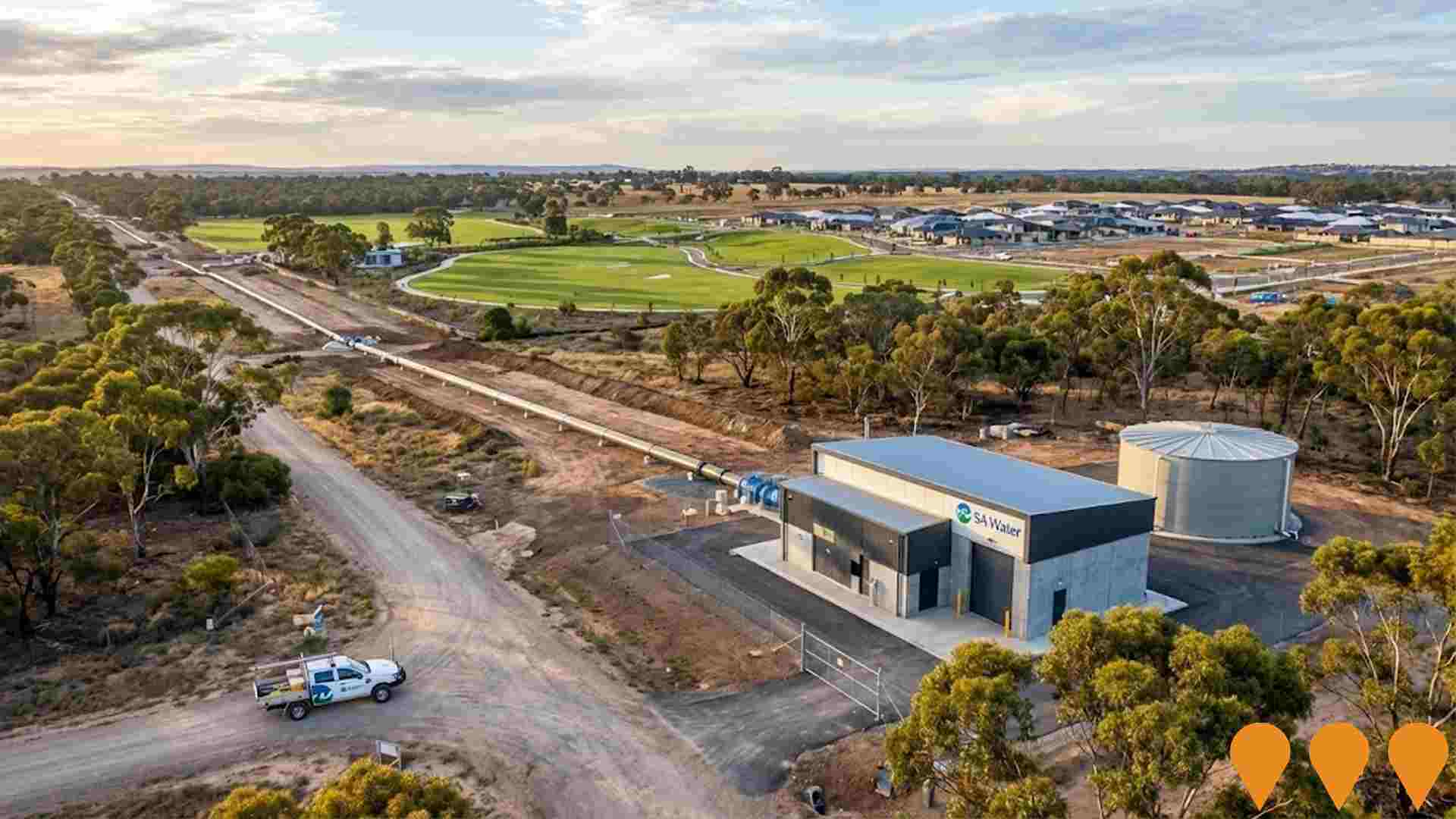
New Women's and Children's Hospital
A new $3.2 billion state-of-the-art hospital at the former SAPOL Barracks site with 414 overnight beds (56 more than current hospital) plus capacity for an additional 20 beds in future. Features include larger emergency department with 43 treatment spaces, Australia's first all-electric public hospital, integrated 4-bed ICU for women co-located with Paediatric ICU, on-site helipad with direct access to critical clinical areas, and all critical care services (birthing, theatres, PICU, NICU) co-located on one floor. Located in Adelaide BioMed City precinct near Royal Adelaide Hospital. Construction commenced April 2024 with $306 million Stage 1 works package (1,300-space car park and central energy facility) and $427 million Stage 2 foundational works package confirmed November 2024. New design team appointed June 2025. Expected completion 2030-31.
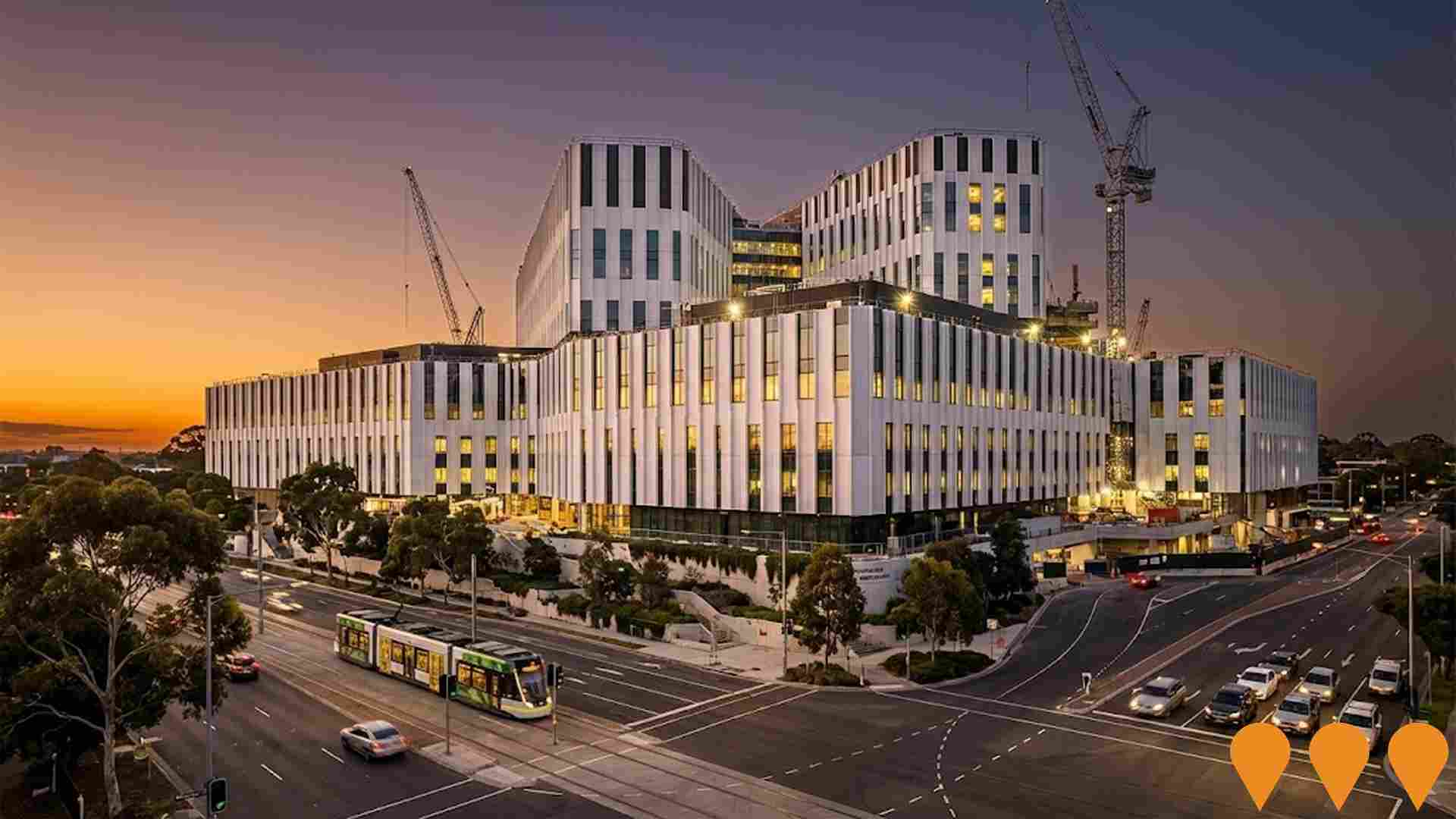
Prospect Lifestyle Precinct
The Prospect Lifestyle Precinct Masterplan aims to revitalize Prospect Oval, Memorial Gardens, and surrounding areas into a vibrant health, wellness, fitness, and sporting precinct. Key features include expanded open green spaces, a new indoor sport and recreational facility, upgraded sporting amenities, improved accessibility, and high-quality mixed-use development opportunities to enhance community usage, sporting participation, and economic development while ensuring financial sustainability through partnerships and commercial returns.
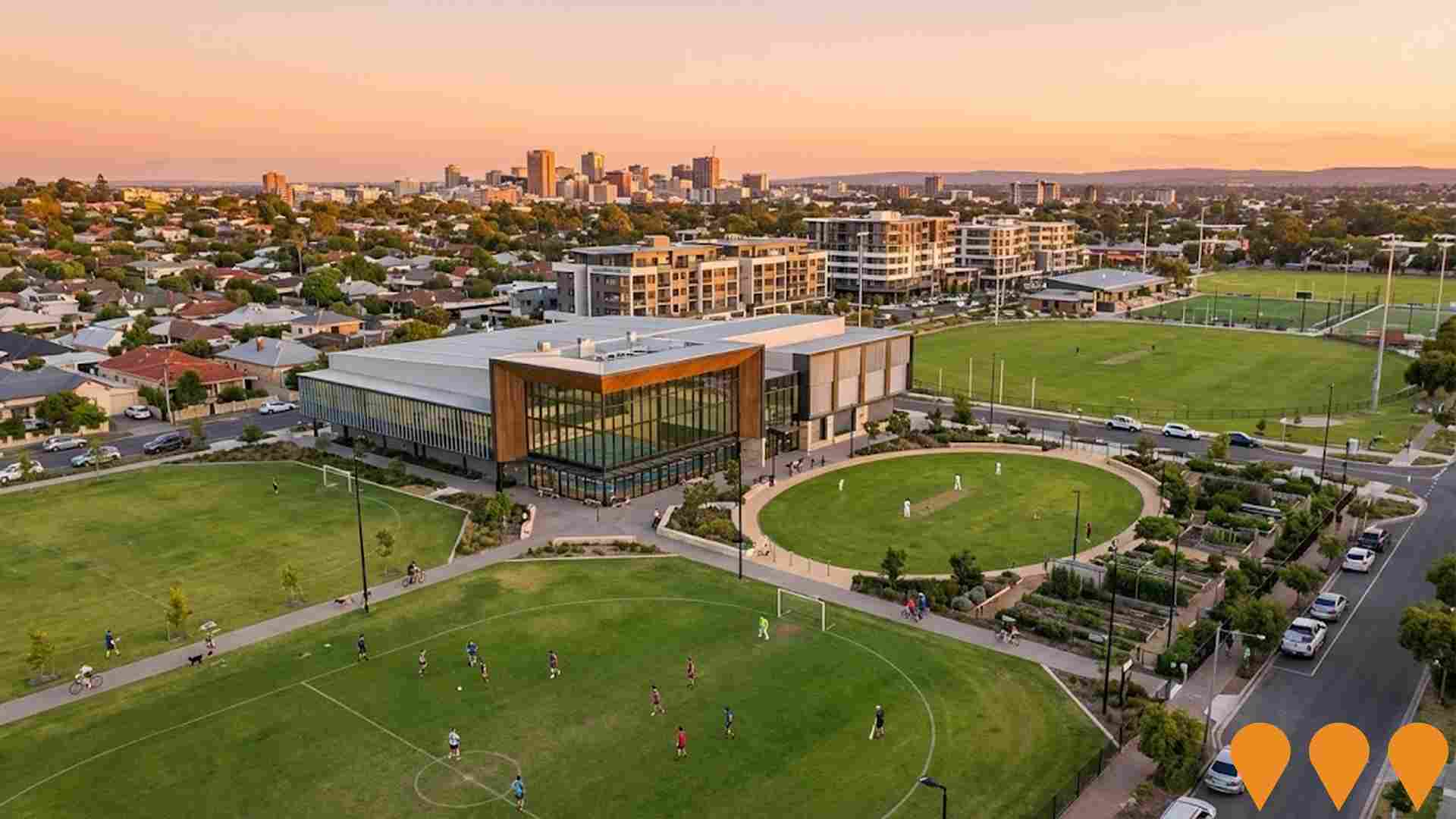
Northern Adelaide Road Upgrades Program
Comprehensive road upgrade program including intersection improvements, roundabouts, traffic signals, and safety upgrades across Curtis Road, Dalkeith Road, and multiple other locations in northern Adelaide corridors improving traffic flow, safety and connectivity across multiple arterial roads.
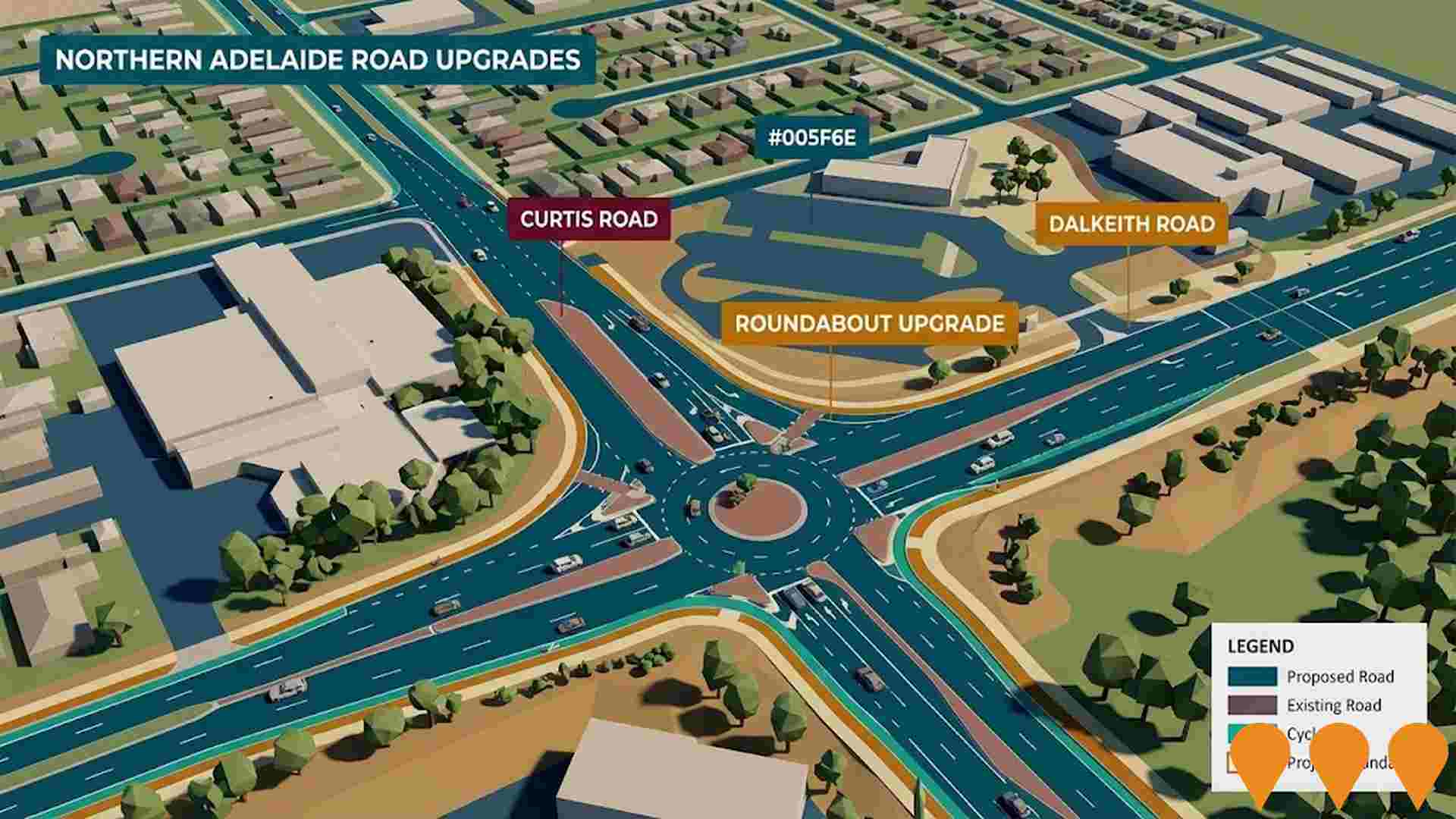
Adelaide Public Transport Capacity and Access
State-led program work to increase public transport capacity and access to, through and within central Adelaide. Current work is focused on the City Access Strategy (20-year movement plan for the CBD and North Adelaide) and the State Transport Strategy program, which together will shape options such as bus priority, interchange upgrades, tram and rail enhancements, and better first/last mile access.
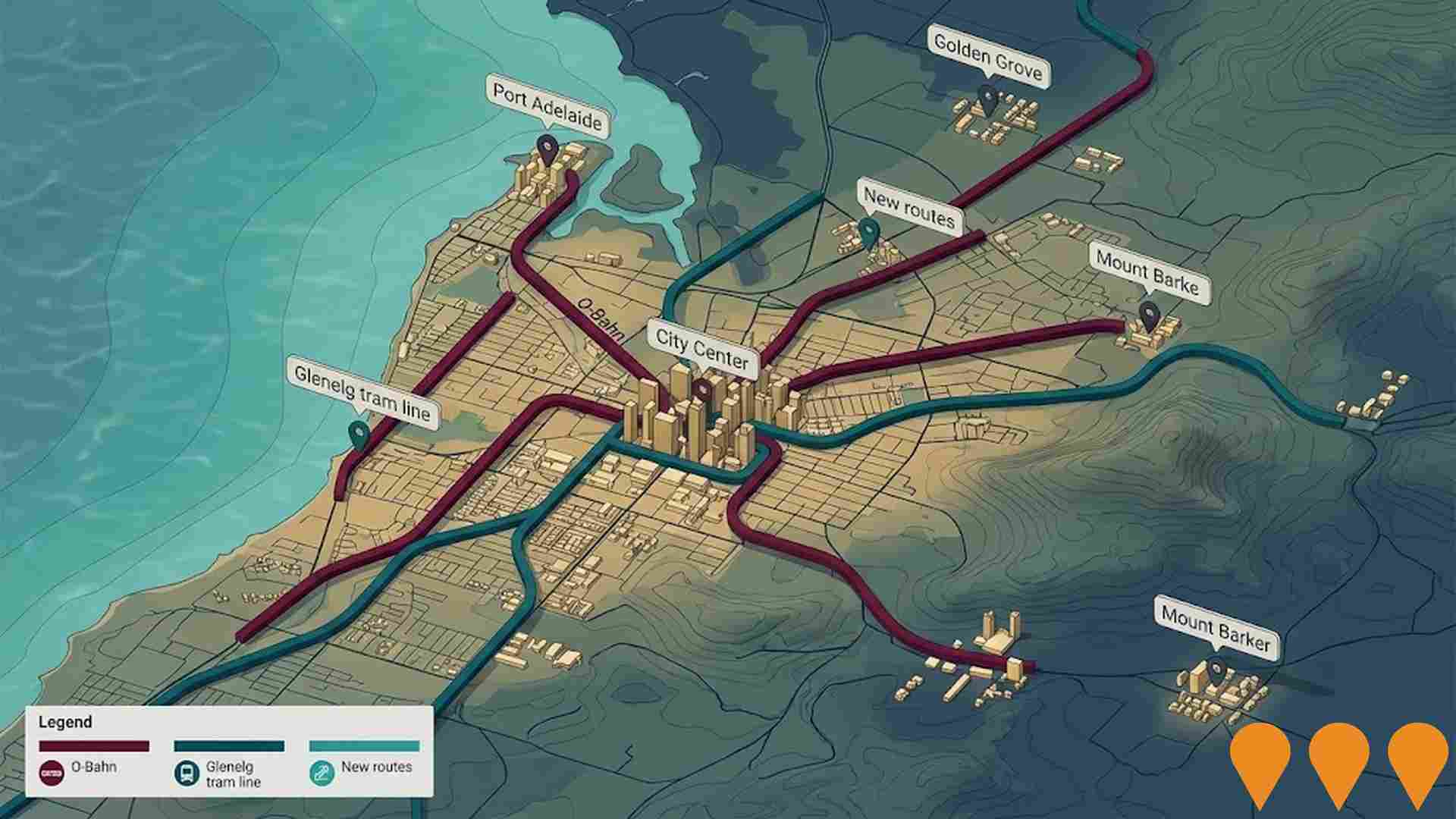
Bulk Water Supply Security
Nationwide program led by the National Water Grid Authority to improve bulk water security and reliability for non-potable and productive uses. Activities include strategic planning, science and business cases, and funding of state and territory projects such as storages, pipelines, dam upgrades, recycled water and efficiency upgrades to build drought resilience and support regional communities, industry and the environment.

North South Corridor
The North-South Corridor in Australia, a 78 km non-stop motorway from Gawler to Old Noarlunga through Adelaide, includes several projects like the Southern Expressway and Darlington Upgrade. Completion expected by 2031.
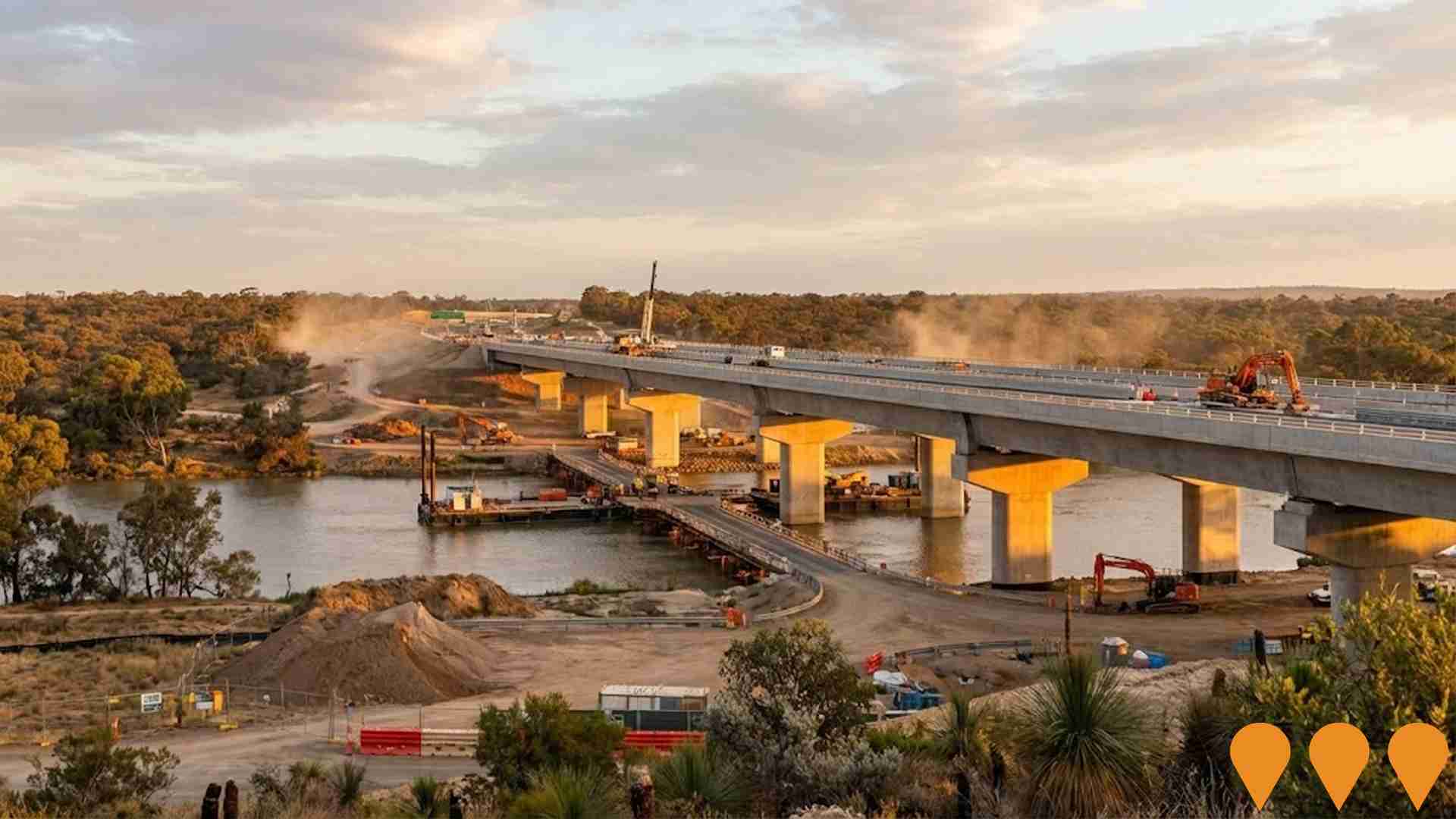
Our Port
Port Adelaide will be a place of discovery, energy, culture and diversity - an eclectic, vibrant reflection of the South Australian character more broadly. The project is a renewal effort to rejuvenate Port Adelaide, aiming to create a vibrant, diverse area with 2,000-4,000 homes and 4,000-8,000 people.
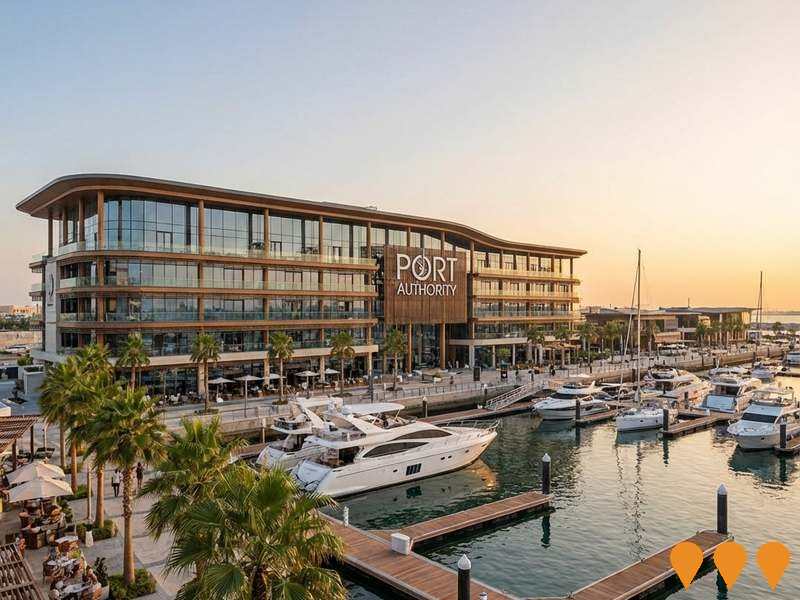
Employment
Employment conditions in Nailsworth - Broadview demonstrate strong performance, ranking among the top 35% of areas assessed nationally
Nailsworth - Broadview has a highly educated workforce with prominent representation in essential services sectors. Its unemployment rate is 2.8%, lower than the national average, and it experienced an employment growth of 1.1% over the past year.
As of June 2025, 3995 residents are employed, with an unemployment rate of 1.2%, below Greater Adelaide's rate of 4.0%. Workforce participation is high at 69.8%, compared to Greater Adelaide's 61.7%. Key employment sectors include health care & social assistance, education & training, and retail trade. Notably, education & training has a concentration level of 1.3 times the regional average.
Conversely, manufacturing shows lower representation at 5.5% versus the regional average of 7.0%. Over the year to June 2025, employment increased by 1.1%, while labour force grew by 1.7%, resulting in a rise in unemployment rate by 0.6 percentage points. Jobs and Skills Australia's national employment forecasts from May 2025 project national employment growth of 6.6% over five years and 13.7% over ten years, with varying rates across sectors. Applying these projections to Nailsworth - Broadview's employment mix suggests local growth of approximately 6.9% over five years and 14.2% over ten years.
Frequently Asked Questions - Employment
Income
The area exhibits notably strong income performance, ranking higher than 70% of areas assessed nationally through AreaSearch analysis
AreaSearch aggregated latest postcode level ATO data released for financial year 2022. Nailsworth - Broadview had a median income among taxpayers of $56,940 and an average level of $80,104. These figures were among the highest in Australia, compared to Greater Adelaide's levels of $52,592 and $64,886 respectively. Based on Wage Price Index growth of 12.83% since financial year 2022, current estimates as of September 2025 would be approximately $64,245 (median) and $90,381 (average). From the 2021 Census, household, family and personal incomes in Nailsworth - Broadview cluster around the 69th percentile nationally. Income analysis reveals that 31.1% of the population (2,054 individuals) fall within the $1,500 - 2,999 income range, mirroring the region where 31.8% occupy this bracket. After housing costs, residents retain 86.9% of income, reflecting strong purchasing power and the area's SEIFA income ranking places it in the 7th decile.
Frequently Asked Questions - Income
Housing
Nailsworth - Broadview displays a diverse mix of dwelling types, with a higher proportion of rental properties than the broader region
In Nailsworth - Broadview, as per the latest Census, 61.1% of dwellings were houses, with the remaining 38.9% being semi-detached, apartments, or other types. This compares to Adelaide metro's 66.2% houses and 33.7% other dwellings. Home ownership in Nailsworth - Broadview stood at 30.2%, with mortgaged dwellings at 33.6% and rented ones at 36.2%. The median monthly mortgage repayment was $1,820, lower than Adelaide metro's $2,000. The median weekly rent was $320, compared to Adelaide metro's $345. Nationally, Nailsworth - Broadview's mortgage repayments were below the Australian average of $1,863, and rents were substantially lower than the national figure of $375.
Frequently Asked Questions - Housing
Household Composition
Nailsworth - Broadview features high concentrations of group households, with a fairly typical median household size
Family households constitute 66.0% of all households, including 32.5% couples with children, 23.8% couples without children, and 8.4% single parent families. Non-family households account for the remaining 34.0%, with lone person households at 29.0% and group households comprising 4.8% of the total. The median household size is 2.5 people, which aligns with the Greater Adelaide average.
Frequently Asked Questions - Households
Local Schools & Education
Nailsworth - Broadview shows strong educational performance, ranking in the upper quartile nationally when assessed across multiple qualification and achievement indicators
Educational attainment in Nailsworth - Broadview is significantly higher than broader benchmarks. 43.1% of residents aged 15 and above hold university qualifications, compared to 25.7% in South Australia (SA) and 28.9% in the Greater Adelaide area. Bachelor degrees are most common at 28.2%, followed by postgraduate qualifications at 10.7% and graduate diplomas at 4.2%. Vocational credentials are also prominent, with 25.8% of residents aged 15 and above holding such qualifications - advanced diplomas at 10.5% and certificates at 15.3%.
Educational participation is high, with 28.9% of residents currently enrolled in formal education. This includes 9.5% in primary education, 7.6% in tertiary education, and 6.5% pursuing secondary education. Nailsworth Primary School serves the local area, with an enrollment of 562 students as of a certain date. The school focuses exclusively on primary education, with secondary options available in surrounding areas. School places per 100 residents (8.5) are below the regional average (16.6), indicating some students may attend schools in adjacent areas.
Frequently Asked Questions - Education
Schools Detail
Nearby Services & Amenities
Transport
Transport servicing is good compared to other areas nationally based on assessment of service frequency, route connectivity and accessibility
Transport analysis shows 19 active stops operating within Nailsworth-Broadview. These stops serve a mix of bus routes, totaling 25 individual routes. They facilitate 2,107 weekly passenger trips collectively.
Residential accessibility to transport is rated good, with residents typically located 253 meters from the nearest stop. Service frequency averages 301 trips per day across all routes, resulting in approximately 110 weekly trips per individual stop.
Frequently Asked Questions - Transport
Transport Stops Detail
Health
Nailsworth - Broadview's residents are extremely healthy with both young and old age cohorts seeing low prevalence of common health conditions
Analysis of health metrics indicates robust performance throughout Nailsworth - Broadview, with both younger and older age cohorts experiencing low prevalence of common health conditions. The rate of private health cover is notably high at approximately 60% of the total population (3950 people), compared to 64.0% across Greater Adelaide.
Mental health issues and arthritis are the most prevalent medical conditions in the area, affecting 7.8 and 7.1% of residents respectively. A significant majority, 72.5%, report being completely free from medical ailments, comparable to 72.6% across Greater Adelaide. The area has an 18.3% senior population (1207 people), with health outcomes among seniors particularly strong and outperforming the general population in health metrics.
Frequently Asked Questions - Health
Cultural Diversity
Nailsworth - Broadview was found to be more culturally diverse than the vast majority of local markets in Australia, upon assessment of a range of language and cultural background related metrics
Nailsworth-Broadview has a higher cultural diversity than most local areas, with 28.2% of its population born overseas and 26.3% speaking a language other than English at home. Christianity is the predominant religion in Nailsworth-Broadview, making up 45.0% of its population. Hinduism is notably overrepresented, comprising 7.0% compared to the regional average of 4.8%.
The top three ancestry groups are English (24.2%), Australian (19.3%), and Other (9.9%). Some ethnic groups show notable differences in representation: Polish at 1.1% (regional average also 1.1%), Italian at 7.0% (vs regional 7.4%), and Greek at 3.3% (vs regional 4.3%).
Frequently Asked Questions - Diversity
Age
Nailsworth - Broadview's population is slightly younger than the national pattern
Nailsworth - Broadview has a median age of 38, nearly matching Greater Adelaide's figure of 39 and Australia's median age of 38. Compared to the Greater Adelaide average, the 65-74 cohort is notably over-represented in Nailsworth-Broadview at 11.5%, while the 75-84 year-olds are under-represented at 4.9%. Between 2021 and present, the 65-74 age group has grown from 9.6% to 11.5% of the population, and the 75-84 cohort increased from 3.6% to 4.9%. Conversely, the 25-34 cohort has declined from 15.1% to 14.2%. Demographic modeling suggests significant changes in Nailsworth-Broadview's age profile by 2041. The 75-84 age cohort is projected to grow significantly, increasing by 191 people (60%) from 321 to 513. Notably, the combined 65+ age groups will account for 92% of total population growth, reflecting the area's aging demographic profile. Meanwhile, the 0-4 and 5-14 cohorts are expected to experience population declines.


